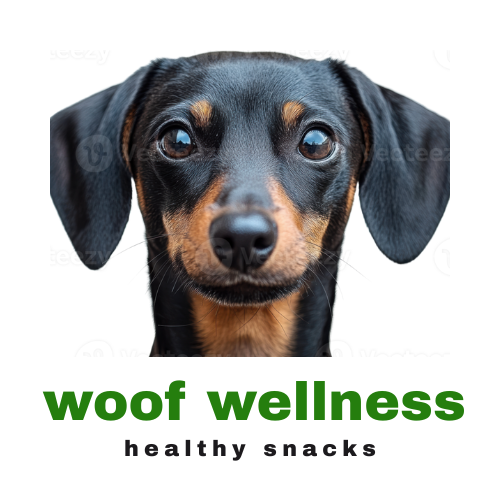If your dog has allergies, picking the right treats can feel pretty overwhelming at first. I’ve spent plenty of time searching for allergy friendly snacks because my own pup has a sensitive stomach and itchy skin. The good news is, making homemade treats for dogs with allergies is not only possible, it’s actually pretty fun and helps you know exactly what’s going into your furry friend’s belly. Here’s how I go about it and what recipes I keep on hand.
Why Homemade Treats are Worth It for Dogs with Allergies
Store-bought treats can sneak in a lot of things that your dog doesn’t need, like hidden grains, beef, dairy, poultry byproducts, or artificial flavors. A lot of the most common allergens for dogs show up in commercial snacks. Even if a treat is labeled hypoallergenic, I like doublechecking the ingredients because it makes things a lot safer for my pup, and sometimes it’s just easier to make them at home. Cooking for a dog with allergies means I can pick only safe ingredients, avoid anything questionable, and make sure my dog actually likes the flavor.
What Can I Cook for My Dog With Allergies?
When I make treats for allergic dogs, I focus on single ingredient or limited ingredient recipes. Usually that means:
- Skipping all common allergens: chicken, beef, dairy, wheat, soy, corn, and eggs
- Using dog safe fruits, veggies, and gluten free flours like oat, buckwheat, or coconut
- Choosing protein sources like fish or novel proteins (duck, kangaroo, venison)
- Trying out nonmeat options if your dog is more sensitive (pumpkin and sweet potato are favorites)
Homemade dog treat recipes for allergies can be as easy as a single ingredient dehydrated sweet potato chew or as creative as salmon oat biscuits. It all depends on your dog’s list of safe foods. Asking your vet to go over any recipes if you’re new to making treats is always a good idea, and it gives you peace of mind that you’re not missing any potential allergens.
Making your own treats also means you can experiment with different flavors and textures to see what your dog really enjoys. Sometimes it takes a bit of trial and error, but over time you’ll find recipes that your pup will love and that won’t cause any allergic reactions.
Best Ingredients for Dogs With Allergies
The best ingredients for dogs with allergies are typically those that avoid the major triggers and keep things simple. Here are some go-tos that I use in my kitchen and others recommend:
- Fish (especially salmon or whitefish, as long as they’re boneless and baked)
- Sweet potato (baked, diced, mashed or sliced into chews)
- Pumpkin puree (plain, not pumpkin pie mix)
- Pear and apple (peeled, core removed, chopped small)
- Coconut oil and coconut flour for baking
- Oat flour or rolled oats (as long as your dog isn’t sensitive to oats)
- Blueberries (great for freezing into little bites)
- Quinoa (cooked, not seasoned)
Read labels and steer clear of xylitol, raisins, grapes, onions, garlic, chocolate, and anything else that’s toxic to dogs. Sticking to these ingredients can be a safer way to start making allergy friendly treats at home. The American Kennel Club has a good guide on safe foods for dogs if you want to doublecheck something.
You can also branch out into including low allergen proteins and keep processed foods out. Fresh, whole, single source ingredients make everything simpler, letting you track down exactly what might be causing issues.
My Favorite Allergy Friendly Dog Treat Recipes
Everybody’s dog is a little different, so these are recipes I use for my own pup who reacts badly to grains and chicken. Swap out flours or proteins to fit your dog’s specific allergies and always test with a small amount first.
1. Salmon Oat Biscuits
 Salmon Oat Biscuits
Salmon Oat Biscuits
- 1 can (5 oz) boneless, skinless salmon in water (unsalted, drained)
- 1 cup oat flour (gluten free if needed)
- 1 egg (or use about 1/4 cup unsweetened applesauce as an egg substitute)
- 1 tbsp coconut oil
Mix all ingredients in a bowl, shape into small balls or bone shapes, place on a baking sheet lined with parchment, and bake at 350°F (175°C) for about 1820 minutes. Cool completely before serving.
2. No Bake Pumpkin Balls
 Pumpkin balls
Pumpkin balls
- 1/2 cup unsweetened pumpkin puree
- 2 1/2 cups quick oats (gluten free if needed)
- 2 tbsp coconut oil, melted
Mix everything until it comes together. Scoop out spoon fuls and roll into small balls. Chill in the fridge for an hour to set.
3. Banana Carrot Dog Treats
 Banana Carrot Dog Treats
Banana Carrot Dog Treats
These banana carrot dog treats are loaded up with a whole host of healthy ingredients and the end result is a super-tasty, wholesome and crunchy treat that will be a hit with your four-legged family members.
- 1 cup whole wheat flour
- 3/4 cup oat bran hot cereal mix
- 1 cup mashed banana
- 2 carrots (medium sized)
- 2 tbsp extra-virgin olive oil
- 1 tbsp unsulphured blackstrap molasses
- 2 tbsp fresh parsley (chopped)
- 1 egg
Preheat the oven to 350°F and line a baking tray with parchment or a silicone mat. Mix grated carrots, mashed banana, and chopped parsley with flour and oat bran. Add egg, molasses, and olive oil, then combine well. Form the dough into a ball, adding more flour if needed. On a floured surface, flatten the dough, cut into shapes, and bake at 350°F for 30 minutes for soft treats. For crunchier treats, turn off the oven, crack the door open, and leave them inside for an additional 20 minutes.
What’s the Best Food to Feed a Dog With Allergies?
When a dog has food allergies, most vets suggest picking a novel protein or a prescription hypoallergenic food. Some dogs do better with a basic limited ingredient diet; think single protein and single carb like salmon and sweet potato, or turkey and quinoa. These diets help you spot which foods set off a reaction. For home cooking, I aim for balance but always check recipe ideas with a vet or pet nutritionist to be sure I’m not missing something important.
Commercial foods can work too, as long as they’re tailored for allergies and made by brands you trust, like Hill’s Prescription Diet z/d or Royal Canin Hydrolyzed Protein. But homemade lets you customize every single ingredient to suit your dog’s needs.
Sometimes the best results come from blending a high quality commercial kibble as a base with your own safe, homemade toppers, as long as you doublecheck that each addition fits your dog’s allergy profile. Keep your dog’s meals simple and uncluttered so that you can spot any reactions right away, and always introduce new components carefully.
Treats I Give My Hypoallergenic Dog
Most of the time, treats for hypoallergenic dogs are made from as few ingredients as possible to avoid triggering allergies. For my dog, I stick to a rotation of homemade oat biscuits, frozen fruit bites, or dehydrated veggie chews like the ones above. I avoid beef, chicken, wheat, dairy, egg, soy, and anything processed.
Some commercial options that are fairly safe for lots of allergic dogs include:
- Freeze dried salmon bites
- Crunchy single ingredient treats like plain cod skins
- Simple fruit or veggie bites (such as freeze dried apple, pumpkin, or banana with nothing else added)
- Baked limited ingredient biscuits (always check ingredients list carefully!)
Every dog is unique, so what’s safe for mine might not work for yours. Check labels, do small tests, and always talk with your veterinarian if you’re unsure. Even if a treat looks safe on the surface, ingredients can change or cross contamination can happen, so staying sharp with label reading is key.
Tips for Making Homemade Treats for Allergy Prone Dogs
- Start with a food journal; write down everything your dog eats and any reactions
- Introduce new treats one at a time, with a few days in between
- Bake in small batches and freeze extras so nothing goes to waste
- Watch out for nut butters (peanut, almond) as they can sometimes hide xylitol or salt
- Skip artificial flavors, colors, and unnecessary fillers
These habits help narrow down what works best for your pup and make it easier to spot new allergies if they pop up. Taking a little extra care when prepping treats helps you catch problem ingredients fast, making life a whole lot simpler for both you and your dog.
Making Your Own Allergy Friendly Dog Treats Pays Off
Homemade treats give you full control over everything your pup eats, which is really important when it comes to managing allergies. With a handful of wholefood ingredients and a little time in the kitchen, you can create snacks that keep your dog both happy and itch free. Testing new ideas, keeping recipes simple, and listening to your dog’s needs is the best way to make treat time safe and fun for both of you. Making allergy friendly dog treats at home gets easier every time, and your dog will appreciate all the extra care you put in. The small effort pays off with a healthy, tail wagging best friend!

This was such a helpful and informative read—thank you!
I’ve recently started making allergy-friendly treats for my own dog, who’s sensitive to both chicken and grains.
I’m curious—have you ever tried using buckwheat flour in place of oat or wheat? I’ve been experimenting with it and would love to know if others have had success with it in homemade recipes.
Yes, buckwheat flour is actually a great option for dogs with allergies! Despite the name, buckwheat is not a grain and is naturally gluten-free, which makes it safe for many pups with grain sensitivities. It’s also rich in fiber and minerals like magnesium and iron. I’ve used it in homemade biscuit recipes and found it gives a nice texture, especially when mixed with something moist like pumpkin or banana. Just like with any new ingredient, it’s always good to try a small amount first and watch for any reaction. 😊🐶
Let me know if you’d like a simple recipe using buckwheat!